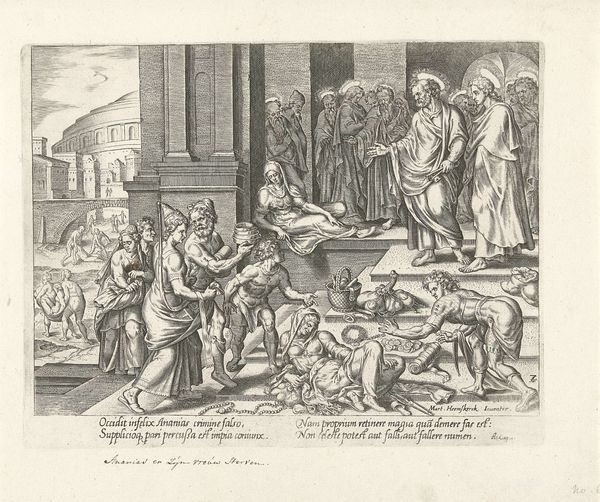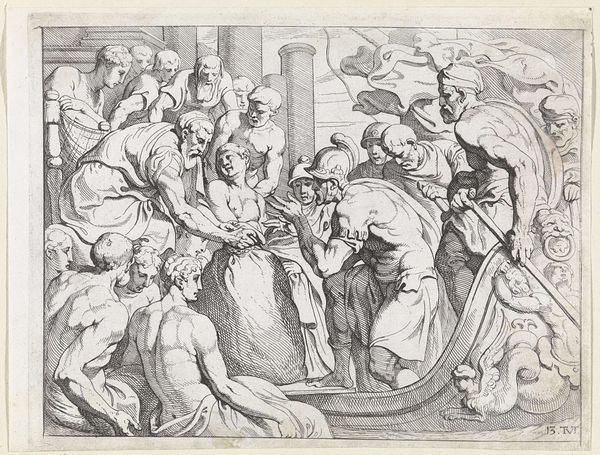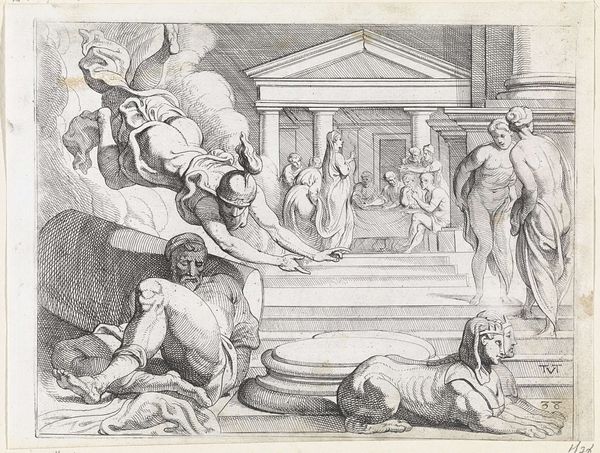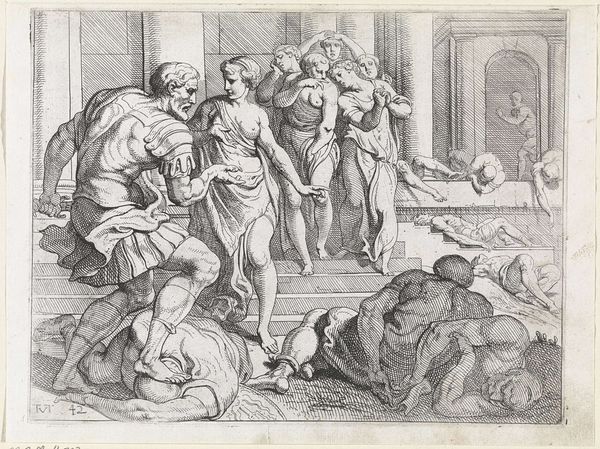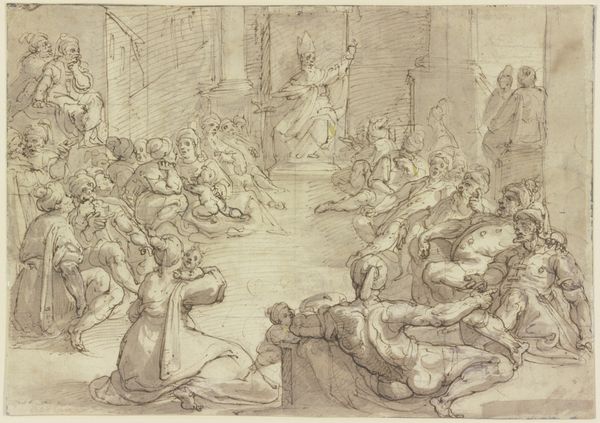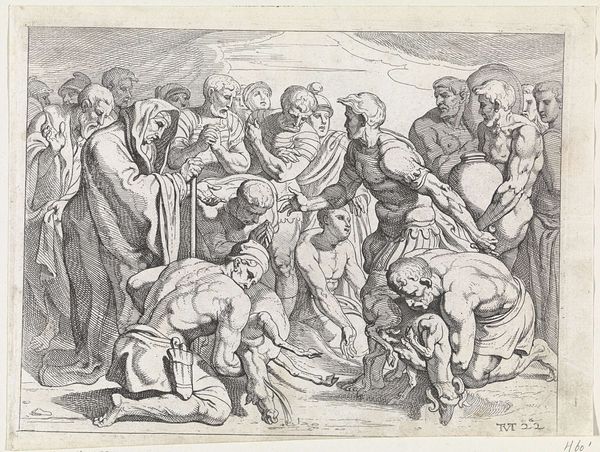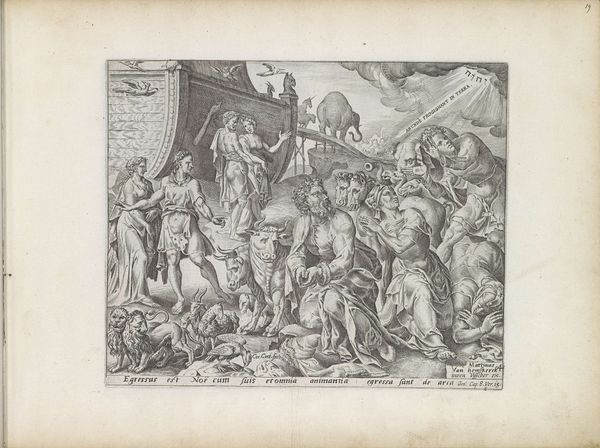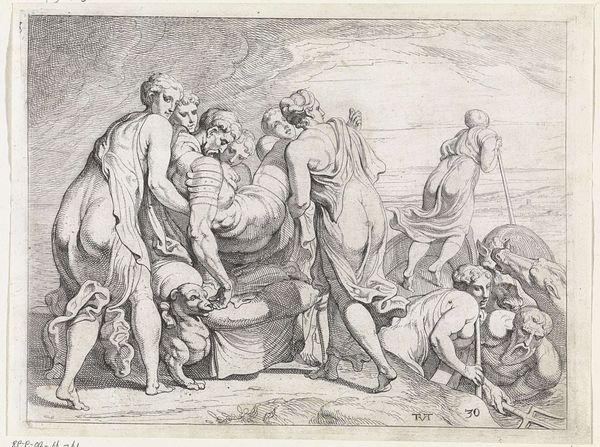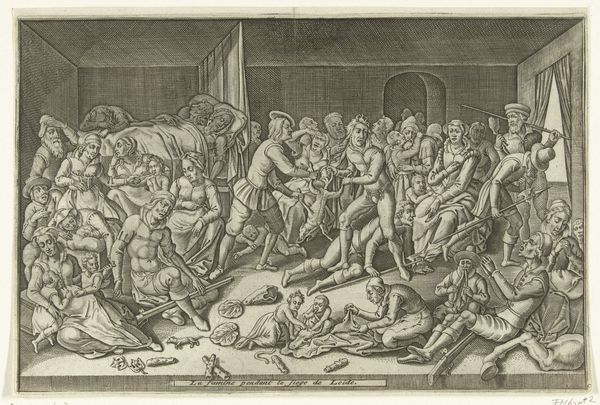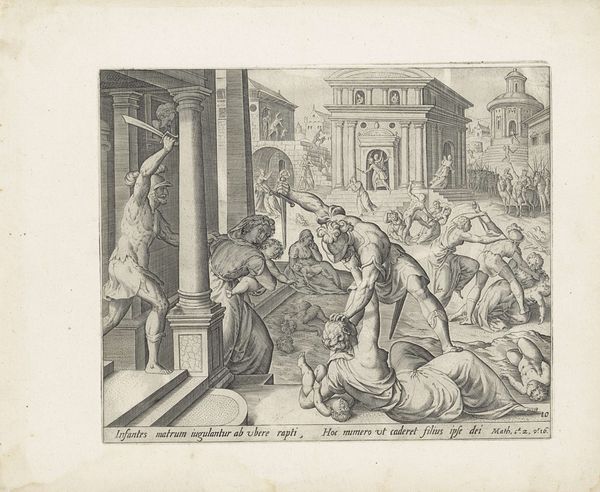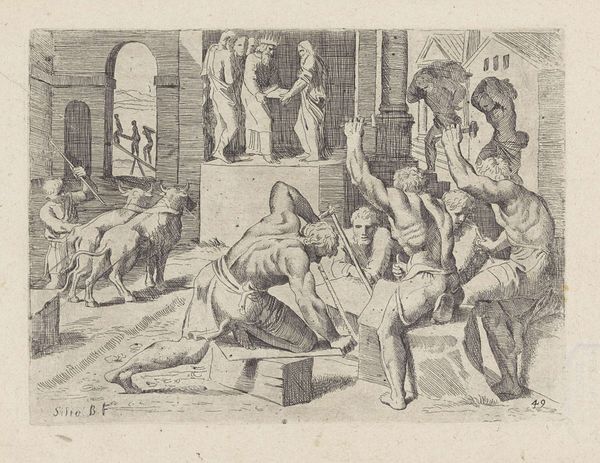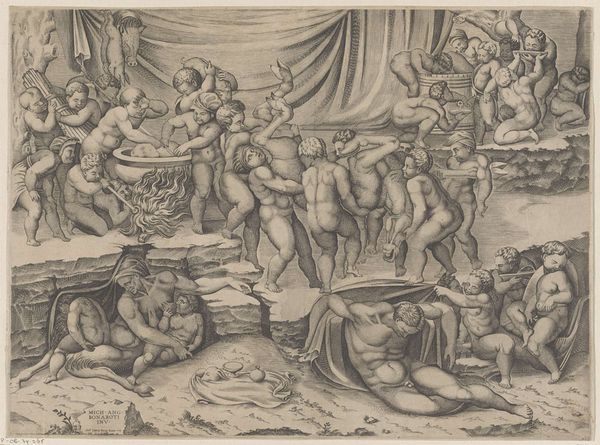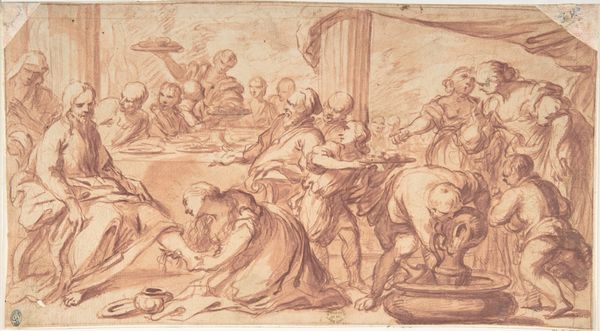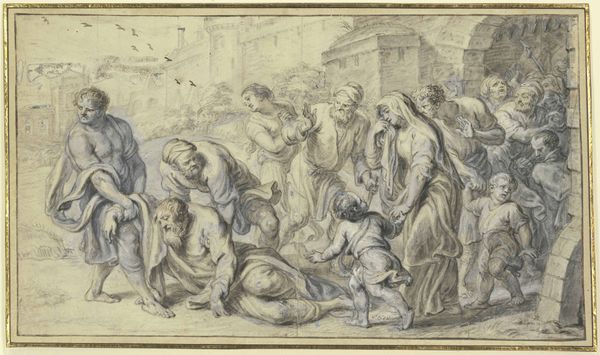
drawing, ink
#
drawing
#
narrative-art
#
baroque
#
figuration
#
ink
#
history-painting
Dimensions: height 195 mm, width 425 mm
Copyright: Rijks Museum: Open Domain
This is Theodoor van Thulden’s print, "Odysseus in de onderwereld." Van Thulden, working in the 17th century, positions his etching within a long tradition of artists depicting scenes from Homer’s "Odyssey". Here, Odysseus stands heroic and nude, bow in hand, at the entrance to the underworld. But what does it mean to render this scene, from this perspective, at this time? The artist made this print at a time of religious and political upheaval. The Dutch Republic was asserting its independence from Spain, and new ideas about humanism were spreading across Europe. By representing Odysseus in the underworld, van Thulden perhaps means to engage with questions of power, fate, and the human condition. Consider the emotional weight of this scene. What does it mean for Odysseus to confront the ghosts of the past, and how might this speak to the experiences of individuals navigating the tumultuous social landscape of the 17th century? The print invites us to reflect on the ways in which classical narratives can be adapted to address the complex issues of identity, memory, and power.
Comments
No comments
Be the first to comment and join the conversation on the ultimate creative platform.
